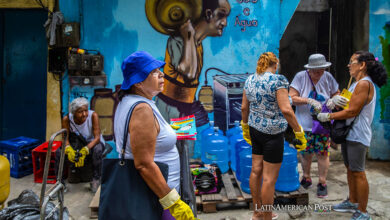ILO: 1 Out Of 5 Employees Experience Violence at Work
According to a Global Survey on Experiences of Violence at Work and Workplace Harassment, Around 23% of the Workers Surveyed Stated that they had Suffered Physical, Psychological or Sexual Violence.

Photo: Freepik
LatinAmerican Post | María Fernanda Ramírez Ramos
Listen to this article
Leer en español: OIT: 1 de cada 5 empleados sufre violencia en el trabajo
Work is one of the great engines of society because it allows the production of goods and services that sustain global activity. On the other hand, it allows people to acquire monetary income to survive. However, history shows that it is necessary to establish regulations so that workers have guarantees of respect for their human rights and as employees. Despite the fact that many countries have made progress in these guarantees for workers, there are still multiple situations that endanger the dignity of people. A new global survey reveals that harassment and violence at work has been experienced by about 23% of working people.
During 2021, almost 75,000 people employed in 121 countries and territories were interviewed as part of the Lloyd's Register Foundation Global Risk Survey. This foundation, together with the Gallup polling company and the International Labor Organization ILO, launched a report entitled "Experiences of violence and harassment at work: First global survey."
Also read: How Is Prodata Energy? the Venezuelan Company that Will Be Able to Supply Gas to Colombia
"Globally, 17.9 percent of wage-earning women and men responded that they had been victims of psychological violence and harassment during their working lives, and 8.5 percent that they had faced physical violence and harassment, men in greater numbers of those surveyed, 6.3 percent reported that they had faced sexual violence and harassment, with women being the most exposed," says an ILO press release.
Silence is one of the biggest barriers when violence occurs in the workplace. "The most common reasons for reluctance are 'loss of time' and 'fear for reputation.' Women were more likely to share their experiences than men (60.7 percent vs. 50.1 percent)," notes the ILO press release.
The challenges in Latin America
Despite the fact that the aforementioned survey does not show differentiated results by region, there are several related indicators that allow an analysis of the state of workers' rights in the region. "The report tells us about the scale of the task ahead to end violence and harassment in the world of work. I hope this study will accelerate action on the ground and towards the ratification and implementation of Convention No. 190 of the ILO”, says Manuela Tomei, Assistant Director-General for Governance, Rights, and Dialogue.
This ILO Convention on Violence and Harassment, 2019 (No. 190), together with the Violence and Harassment Recommendation, 2019 (No. 206), constitute international standards that establish frameworks to eliminate, prevent and repair people regarding violence and workplace harassment. However, the agreement has only been ratified by 23 countries in the world and, of those, it has only entered into force in 10. Of these, the Latin American countries in which it is already in force are Argentina, Ecuador, and Uruguay. Antigua and Barbuda, the Bahamas, Barbados, El Salvador, Mexico, Panama, and Peru have ratified it, but it will enter into force in 2023.
The sustainable development objective SDG 8: "Promote sustained, inclusive and sustainable economic growth, full and productive employment and decent work for all", establishes that it is necessary to improve employment conditions for all people, placing special emphasis on in equalizing conditions for men and women, and promoting youth employment. Like the other SDGs, it is a guide that countries abide by in order to meet the agreed goals by 2030.
An ECLAC observatory on compliance with the SDGs in Latin America points out that "There are 300 million working poor in Latin America and the Caribbean; of these, 200 million base their livelihood on the informal economy." Likewise, it indicates that around 10.5 million children and adolescents perform child labor. These types of conditions make the fight against violence and harassment additional difficulties.
On the other hand, it is also convenient to ask about the regulation of new forms of work. With the digitization of companies, new concerns arise about the regulation of technologies at work and what are the rights of workers.




